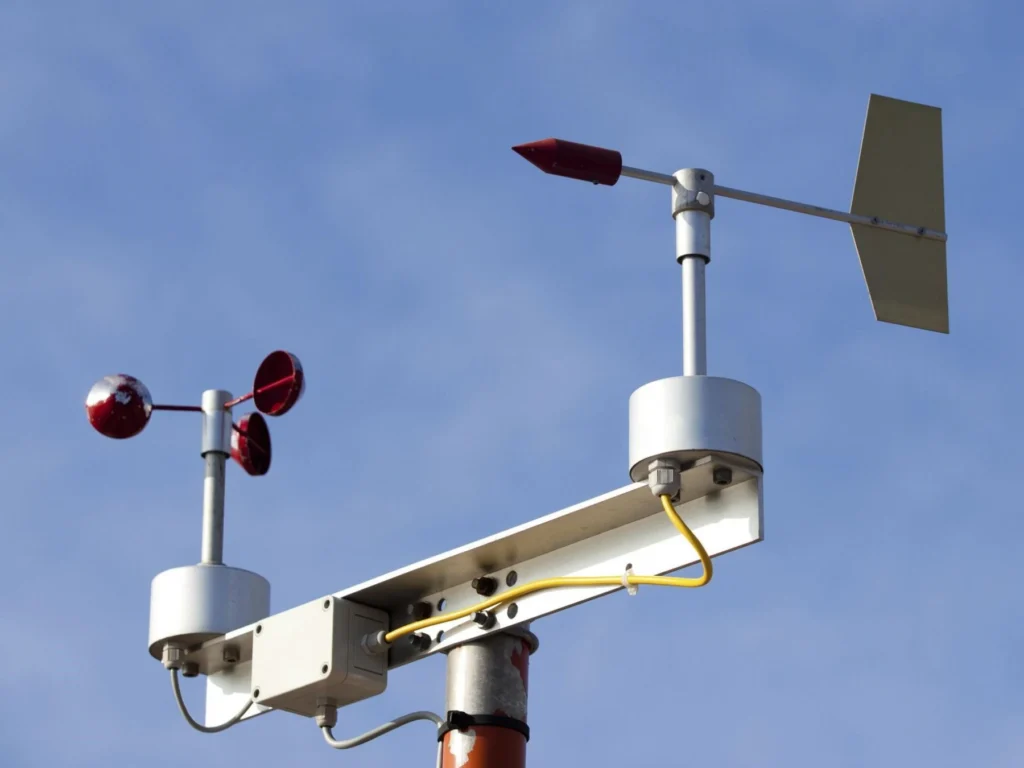
# Anemometer: The Instrument for Measuring Wind Speed
## Introduction to Anemometers
An anemometer is a device used to measure wind speed, a crucial parameter in various fields such as meteorology, aviation, and environmental science. The ability to accurately measure wind speed helps in predicting weather patterns, ensuring safe flight operations, and assessing wind energy potential.
## Types of Anemometers
There are several types of anemometers, each designed for specific applications:
### 1. Cup Anemometers
Cup anemometers are the most common type and consist of three or four cups mounted on horizontal arms. As the wind blows, the cups rotate, and the speed of rotation is proportional to the wind speed. This type is widely used in weather stations due to its simplicity and reliability.
### 2. Vane Anemometers
Vane anemometers, also known as propeller anemometers, use a propeller mounted on a wind vane to measure wind speed. The vane aligns itself with the wind direction, and the propeller’s rotation speed indicates the wind speed. These are often used in handheld devices for quick measurements.
### 3. Hot-Wire Anemometers
Hot-wire anemometers measure wind speed based on the cooling effect of the wind on a heated wire. The change in electrical resistance of the wire is used to calculate the wind speed. This type is highly sensitive and is used in research and laboratory settings.
### 4. Ultrasonic Anemometers
Ultrasonic anemometers use ultrasonic sound waves to measure wind speed. They consist of multiple pairs of transducers that send and receive sound waves. The time it takes for the sound waves to travel between the transducers changes with wind speed, allowing for precise measurements. These are often used in advanced meteorological applications.
## Applications of Anemometers
Anemometers are used in a variety of applications:
### 1. Weather Forecasting
Accurate wind speed measurements are essential for weather forecasting. Anemometers provide data that helps meteorologists predict storms, hurricanes, and other weather phenomena.
### 2. Aviation
In aviation, anemometers are used to measure wind speed and direction, which are critical for safe takeoffs, landings, and in-flight navigation.
### 3. Wind Energy
Wind turbines rely on anemometers to assess wind speed and determine the optimal conditions for generating electricity. Accurate measurements ensure efficient energy production.
### 4. Environmental Monitoring
Anemometers are used in environmental monitoring to study wind patterns and their impact on ecosystems. This data is crucial for understanding climate change and its effects.
## Conclusion
Anemometers are indispensable tools for measuring wind speed across various industries. From simple cup anemometers to advanced ultrasonic models, these devices provide critical data that enhances our understanding of weather, ensures safety in aviation, and supports renewable energy initiatives. As technology advances, anemometers will continue to play a vital role in our ability to harness and respond to the power of the wind.
Keyword: instrument to measure wind speed
